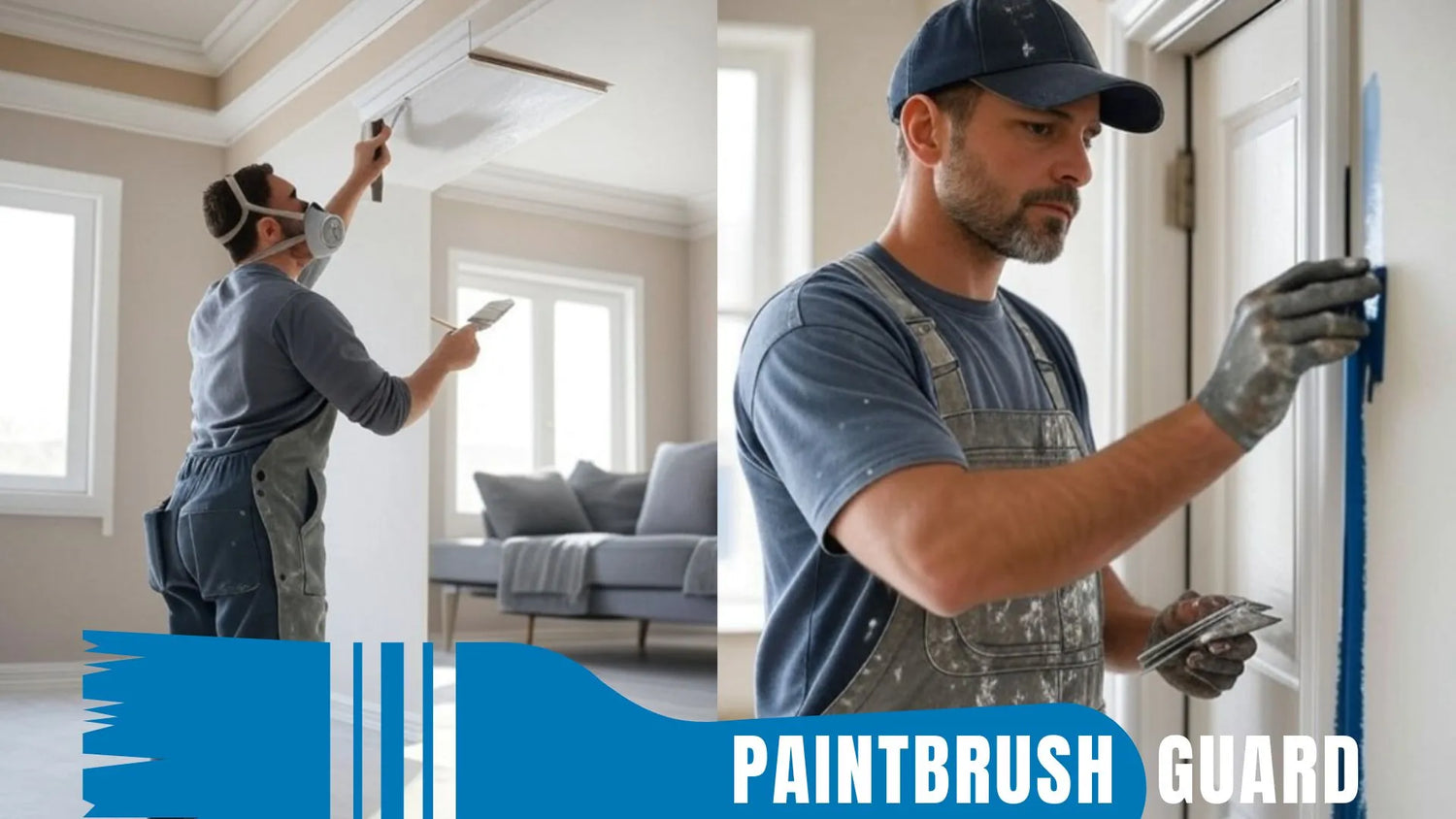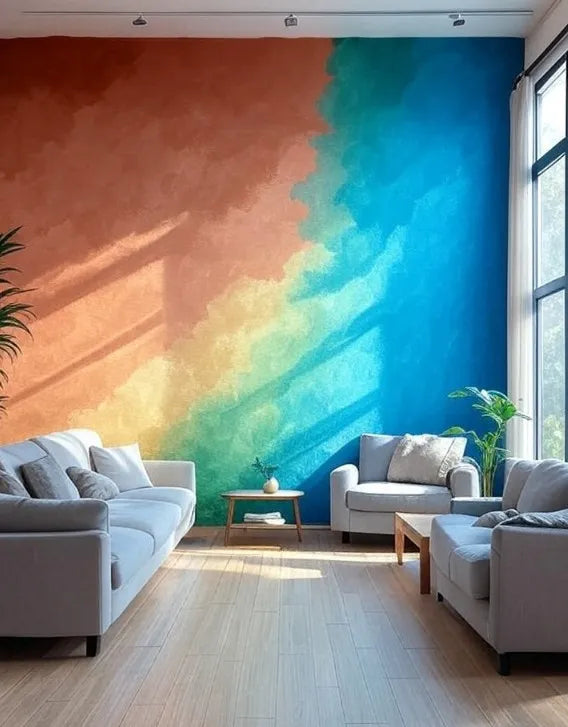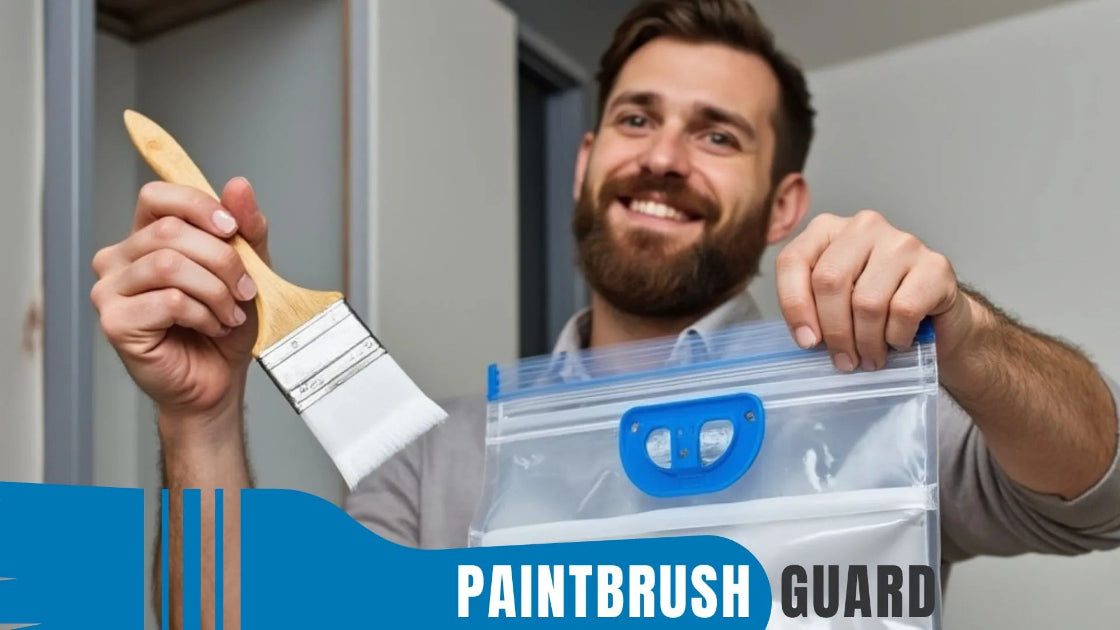
Should I Paint My House Interior Myself or Hire a Professional?
|
Time to read 6 min
|
Time to read 6 min
Whether to paint your house interior yourself or hire a professional depends on your budget, skills, and time. Painting yourself saves money but requires effort, while pros ensure quality with less hassle.
If you are planning to paint your house interior, in this article you will learn easy steps to make your home interior feel new again with step-by-step guides for all interior surfaces.
DIY painting is significantly cheaper than hiring a professional. HomeAdvisor’s 2025 estimates show professional interior painting costs $500–$1,000 per room, including labor and materials.
In contrast, a DIY project might cost $100–$200 for paint, brushes, rollers, and drop cloths, with a gallon of quality paint averaging $30–$70.
If you’re on a tight budget, DIY can save hundreds or thousands, especially for larger projects.
However, professionals often include prep and cleanup in their fees, which can add value if you’re short on time.
Learn how to do house interior painting for ceilings. Use eco friendly paints and sustainable painting tips to brighten rooms with this step-by-step guide.
Your painting skills determine the outcome of a DIY project. Basic tasks like rolling walls are manageable for beginners, but cutting in clean lines around trim and ceilings requires practice.
Mistakes like drips, uneven coats, or missed spots can make a DIY job look amateurish.
Professionals, with their experience and specialized tools, typically deliver a smoother, more polished finish.
A 2024 Zillow report found that homes with professionally painted interiors sold for 5% more on average than those with DIY paint jobs showing visible flaws, highlighting the impact of quality on value.
Learn to clean, prime, and paint trim with eco friendly paint for neat, crisp lines. Get sustainable painting tips to make window and door frames pop with this step-by-step guide.
DIY painting demands a significant time commitment. Prepping a room, moving furniture, taping edges, and laying drop cloths can take hours, and painting a 12x12 room might take 4–6 hours, plus drying time between coats (2–4 hours).
Larger projects can stretch over days or weeks, which might be challenging if you have a busy schedule. Professionals can complete the same job faster, often in a day or two, and handle all prep and cleanup.
Tools like the Paintbrush Guard can make DIY easier by vacuum-sealing brushes between sessions, saving time on cleanup.
Painting your own interior demands a significant time investment. Prepping a room, moving furniture, taping edges, and laying drop cloths can take hours before you even start painting.
A standard 12x12 room might take 4–6 hours to paint, excluding drying time between coats (typically 2–4 hours).
Larger spaces or homes with multiple rooms can stretch the project over days or weeks.
Tools like the Paintbrush Guard can help by vacuum-sealing brushes between sessions, reducing cleanup time and keeping brushes ready for the next day.
Learn how to prep, prime, and paint doors with eco friendly paint for a strong, pretty finish. Discover sustainable painting tricks for smooth, drip-free doors in this step-by-step guide.
Painting yourself gives you full control over the process. You can choose colors, finishes, and techniques without relying on a contractor’s input or schedule.
This freedom is ideal if you have a specific vision, like a bold accent wall or a unique color scheme.
A 2024 survey by the Home Improvement Research Institute found that 68% of DIY painters valued the creative freedom and felt a sense of accomplishment after finishing.
However, if you’re unsure about color choices or design, professionals can offer guidance based on trends and experience.
Find out how to clean, sand, and paint cabinets with eco friendly paint for a tough, new look. Get sustainable painting tips for a smooth finish in this step-by-step guide.
DIY painting can involve risks, especially for complex interiors. High ceilings, stairwells, or textured walls require ladders, and falls are a common DIY injury, per a 2023 Consumer Product Safety Commission report.
Choosing the wrong paint type, like using flat paint in a humid bathroom can lead to peeling or mold.
Professionals are equipped to handle these challenges, with the right tools and safety training.
If your home has intricate trim or large spaces, a pro’s expertise can prevent costly mistakes and ensure a durable finish.
Learn how to prep, prime, and paint baseboards with eco friendly paint for clean room edges. Find sustainable painting tricks for a neat finish in this step-by-step guide.
Hiring a professional makes sense for large or complex projects, or if you lack the time and confidence for DIY.
Pros are ideal for homes with high ceilings, detailed trim, or if you’re preparing to sell, flawless paint jobs can boost buyer appeal.
They also save you the hassle of prep, painting, and cleanup, which is valuable if you’re busy.
However, if you enjoy DIY and have a straightforward project, painting yourself can be rewarding.
For smaller rooms or accent walls, the learning curve is manageable, and the savings are significant.
Learn how to prep, prime, and paint baseboards with eco friendly paint for clean room edges. Find sustainable painting tricks for a neat finish in this step-by-step guide.
If you choose DIY, start with a small room to build skills, and use quality paint and tools for better results.
The Paintbrush Guard can streamline your workflow by keeping brushes wet between sessions, reducing cleanup time.
Watch tutorials for techniques like cutting in and rolling without streaks. If hiring a pro, get multiple quotes, check reviews, and ask for references to ensure quality.
Look for painters who include prep and cleanup in their service, and communicate your vision clearly to avoid misunderstandings.
Painting interior walls? Our 10-step beginner guide with product recommendations ensures a flawless, professional finish for any room.
Painting your house interior yourself is a viable option if you have the time, basic skills, and desire for creative control, offering significant cost savings and personal satisfaction.
However, hiring a professional is better for complex projects, tight schedules, or if you prioritize a flawless finish, especially when selling your home.
Weigh your budget, skills, and project scope, and consider tools like the Paintbrush Guard to make DIY more manageable, ensuring the best outcome for your interior painting project.
Evaluate your budget, time, and skills for a living room repaint. DIY saves money and offers creative control, but requires hours of prep and painting. If you’re comfortable with basic techniques like rolling and have time, DIY can yield satisfying results with a professional look.
The Paintbrush Guard vacuum-seals brushes during breaks for a bedroom accent wall, saving 15 minutes per session by eliminating cleanup. This preserves bristle quality, reduces water waste, and ensures brushes stay ready, streamlining the process for eco-friendly DIY painting.
For a stairwell with high ceilings, professionals use specialized tools and safety training to handle tricky surfaces and deliver flawless results. Their expertise prevents mistakes like uneven coats, making them ideal for intricate or large-scale projects where quality is critical.
Painting a dining room yourself allows you to experiment with bold colors or unique finishes, like a matte accent wall, tailored to your vision. This hands-on approach fosters a sense of accomplishment and lets you work at your own pace, enhancing the painting experience.
For a hallway project, using painter’s tape for clean edges and choosing the right paint, like semi-gloss for trim, prevents drips and peeling. Working in small sections and maintaining a wet edge ensures a smooth finish, minimizing rework and boosting confidence.

Learn about eco-friendly painting, tips and tutorials on house interior and exterior surfaces, so you can get started with your project without any surprices during or after your painting.

Learn how interior house paint colors influence mood with expert tips on room preference so you can pick the best colors for a harmonious home environment.
We focus on the most popular shades for each interior colors, so you don't miss no matter what color you pick.

Learn how this innovative tool allows you to store paintbrushes without the need for immediate cleaning, offering significant advantages in time savings, water conservation, reduced chemical pollution, and lower costs for supplies.
